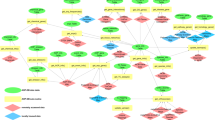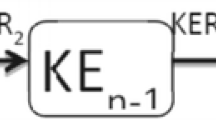Abstract
An Adverse Outcome Pathway (AOP) is an analytical model that describes, through a graphical representation, a linear sequence of biologically connected events at different levels of biological organization, causally leading to an adverse effect on human health or the environment. In general, AOPs are constructed based on five central principles: systematic development and review, chemical–agnostic, modular, networks, and living documents. Furthermore, AOPs have the potential to be used, for example, to investigate certain molecular targets; relate the regulation of specific genes or proteins among AOPs; extrapolate biological processes, pathways, or diseases from one species to another; and even predict adverse effects in particular populations. AOPs also emerge as an alternative to animal experimentation in studies of developmental malformations. It’s even possible now to develop a quantitative AOP to predict teratogenic effects for some substances. However, the construction of high-quality AOPs requires standardization in the way these models are developed and reviewed, ensuring an adequate degree of flexibility and guaranteeing efficiency. The development of AOPs should strictly be based on the guidance documents developed by the OECD. Nevertheless, an important step for those developing AOPs is the choice of an apical endpoint or an initiating molecular event in order to initiate the construction of the pathway. Another crucial step is a systematic literature review based on the random combination of the blocks of information. With these two fundamental steps completed, it only remains to follow the guidance documents on Developing and Assessing Adverse Outcome Pathways and AOP Developers’ Handbook supplement provided by the OECD to organize and construct an AOP. This modern approach will bring radical changes in the field of toxicity testing, regarding the prediction of apical toxic effects using molecular-level effects.
Access this chapter
Tax calculation will be finalised at checkout
Purchases are for personal use only
Similar content being viewed by others
References
OECD (2017) Revised guidance document on developing and assessing adverse outcome pathways. Ser Test Assess 184:1–32. Organisation for Economic Co-Operation and Development (OECD)
OECD (2021) Draft guidance document for the scientific review of adverse outcome pathways. OECD Series on Adverse Outcome Pathways. Organisation for Economic Co-Operation and Development (OECD)
OECD (2023) Adverse outcome pathways, molecular screening and toxicogenomics. Organisation for Economic Co-Operation and Development (OECD)
AOP-Wiki (2023) Collaborative Adverse Outcome Pathway Wiki. https://aopwiki.org/info_pages/2/info_linked_pages/9
EPA (2023) Adverse outcome pathway database (AOP-DB). U.S. Environmental Protection Agency. https://www.epa.gov/healthresearch/adverse-outcome-pathway-database-aop-db
Korenaga TR, Crosland B, Tewari KS (2022) Cancer in pregnancy. DiSaia Creasman Clin Gynecol Oncol E-Book 25:345. https://doi.org/10.1016/B978-0-323-77684-4.00021-0
Ujházy E, Mach M, Navarová J, Brucknerová I, Dubovický M (2012) Teratology–past, present and future. Interdiscip Toxicol 5(4):163–168. https://doi.org/10.2478/v10102-012-0027-0
Panzica-Kelly JM, Zhang CX, Augustine-Rauch KA (2015) Optimization and performance assessment of the chorion-off [dechorinated] zebrafish developmental toxicity assay. Toxicol Sci 146(1):127–134. https://doi.org/10.1093/toxsci/kfv076
Battistoni M, Di Renzo F, Menegola E, Bois FY (2019) Quantitative AOP based teratogenicity prediction for mixtures of azole fungicides. Comput Toxicol 11:72–81. https://doi.org/10.1016/j.comtox.2019.03.004
Menegola E, Veltman CH, Battistoni M, Di Renzo F, Moretto A, Metruccio F et al (2021) An adverse outcome pathway on the disruption of retinoic acid metabolism leading to developmental craniofacial defects. Toxicology 458:152843. https://doi.org/10.1016/j.tox.2021.152843
Krewski D, Andersen ME, Tyshenko MG, Krishnan K, Hartung T, Boekelheide K et al (2020) Toxicity testing in the 21st century: progress in the past decade and future perspectives. Arch Toxicol 94:1–58. https://doi.org/10.1007/s00204-019-02613-4
Bottini AA, Hartung T (2009) Food for thought… on the economics of animal testing. ALTEX-Altern Anim Exp 26(1):3–16. https://doi.org/10.14573/altex.2009.1.3
Busquet F, Hartung T (2017) The need for strategic development of safety sciences. Altern Anim Exp ALTEX 34(1):3–21. https://doi.org/10.14573/altex.1701031
Baker M (2016) Reproducibility crisis. Nature 533(26):353–366. https://doi.org/10.1038/533452A
Jeong J, Choi J (2018) Use of adverse outcome pathways in chemical toxicity testing: potential advantages and limitations. Environ Health Toxicol 33(1). https://doi.org/10.5620/eht.e2018002
Gijbels E, Vilas-Boas V, Annaert P, Vanhaecke T, Devisscher L, Vinken M (2020) Robustness testing and optimization of an adverse outcome pathway on cholestatic liver injury. Arch Toxicol 94:1151–1172. https://doi.org/10.1007/s00204-020-02691-9
Andersen ME, Al-Zoughool M, Croteau M, Westphal M, Krewski D (2010) The future of toxicity testing. J Toxicol Environ Health Part B 13(2–4):163–196. https://doi.org/10.1080/10937404.2010.483933
Zhang Q, Bhattacharya S, Andersen ME, Conolly RB (2010) Computational systems biology and dose-response modeling in relation to new directions in toxicity testing. J Toxicol Environ Health Part B 13(2–4):253–276. https://doi.org/10.1080/10937404.2010.483943
Gibb S (2008) Toxicity testing in the 21st century: a vision and a strategy. Reprod Toxicol 25(1):136–138. https://doi.org/10.1016/j.reprotox.2007.10.013
Author information
Authors and Affiliations
Corresponding author
Editor information
Editors and Affiliations
Rights and permissions
Copyright information
© 2024 The Author(s), under exclusive license to Springer Science+Business Media, LLC, part of Springer Nature
About this protocol
Cite this protocol
Vieira, L., Souza, T., Farias, D. (2024). The First Steps on AOPs’ Concepts, Development, and Applications in Teratology. In: Félix, L. (eds) Teratogenicity Testing. Methods in Molecular Biology, vol 2753. Humana, New York, NY. https://doi.org/10.1007/978-1-0716-3625-1_6
Download citation
DOI: https://doi.org/10.1007/978-1-0716-3625-1_6
Published:
Publisher Name: Humana, New York, NY
Print ISBN: 978-1-0716-3624-4
Online ISBN: 978-1-0716-3625-1
eBook Packages: Springer Protocols




